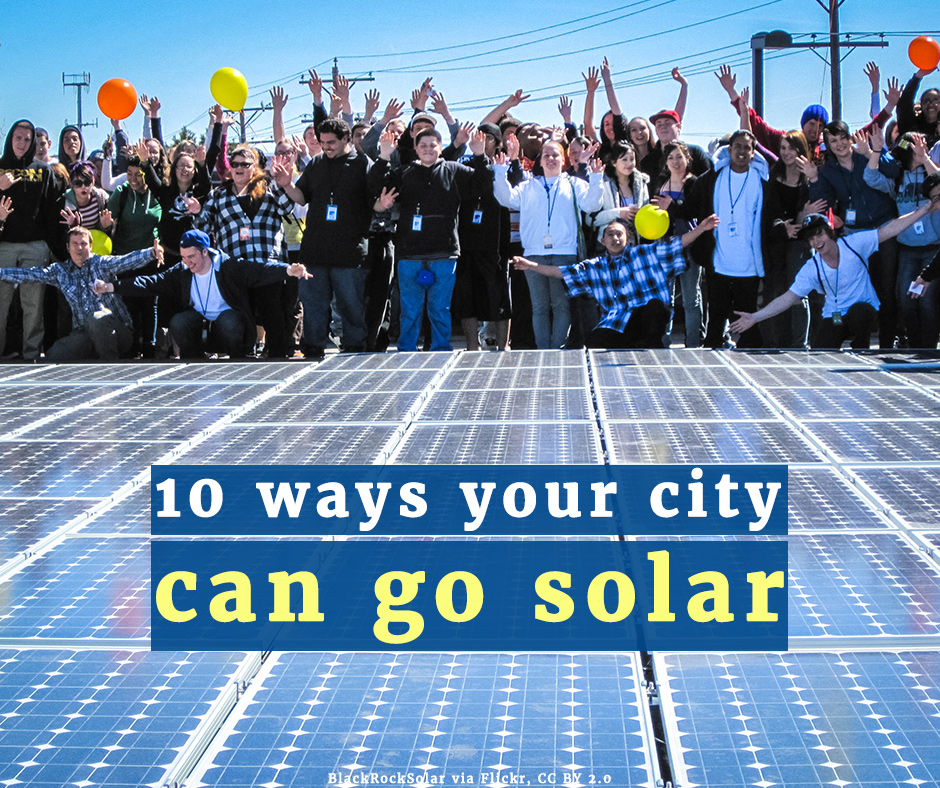Skye Borden

Missoula, MT – With millions of available rooftops, rising public demand for renewable energy, and much-improved storage technology, America’s cities are resolving local air pollution and power generation issues by switching to solar power. Today, Environment Montana Research and Policy Center unveiled a set of ten actions that cities can take to help residents gain access to and maximize solar energy, in a new guide: “Ten Ways Your City Can Go Solar.”
“We have so much to gain from going solar — from providing cleaner air that improves public health to lowering emissions that impact our climate,” said Skye Borden with Environment Montana. “We hope city officials take a good hard look at how they can use all of their available tools and infrastructure to lead locally on a transition to clean, renewable energy.”
According to an upcoming report from Environment Montana, at the end of 2017, the top 20 solar-producing U.S. cities accounted for 5 percent of the country’s solar photovoltaic (PV) capacity, though they only represent 0.1 percent of the land area. Together, these 20 cities are capable of generating nearly 2 gigawatts (GW) of solar power — enough to power almost 400,000 homes.[1] One common feature among leading solar cities is a foundation of pro-solar public policies. The guide released today outlines ten programs and policies that cities can choose from and adapt to take the next step on going solar in their community.
“During our campaign, we’ve spoken with dozens of elected officials and municipal staff from cities large and small, red and blue,” said Borden. “Across the board, the vast majority envision a future powered by clean, renewable energy. This guide will help to set that vision into action.”
Environment Montana also recommends that communities work with technical assistance programs, such as SolSmart, a program funded by the U.S. Department of Energy. Currently, 187 communities representing 54 million Americans have received SolSmart designations by making their cities more solar-friendly.
“Local governments are uniquely positioned to engage and educate their community about local solar energy goals, financing methods, and consumer protection resources,” said Nick Kasza, from the National League of Cities, who has worked extensively with SolSmart. “Cities can also lead by example, installing solar energy on municipal buildings such as fire stations or libraries.”
Here in Montana, cities are well poised to step up and lead the state’s transition towards clean, renewable energy sources. Helena and Missoula have both become designated SolSmart communities. Many Montana cities, including Bozeman, Helena, and Missoula have also constructed community solar projects in recent years.
On April 4, Environment America Research and Policy Center will release its fifth annual Shining Cities report. The report ranks America’s largest cities based on installed solar PV capacity and provides an analysis of the policies driving progress in those that top the charts. For a preview of the report please email Bret Fanshaw, Go Solar Campaign Director, at [email protected].
[1] Environment America Research and Policy Center. Shining Cities 2018: How Smart Local Policies Are Expanding Solar Power in America. April 2018.
